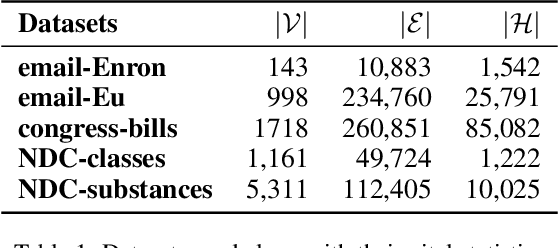Representation Learning for Dynamic Hyperedges
Paper and Code
Dec 19, 2021


Recently there has been a massive interest in extracting information from interaction data. Traditionally this is done by modeling it as pair-wise interaction at a particular time in a dynamic network. However, real-world interactions are seldom pair-wise; they can involve more than two nodes. In literature, these types of group interactions are modeled by hyperedges/hyperlinks. The existing works for hyperedge modeling focused only on static networks, and they cannot model the temporal evolution of nodes as they interact with other nodes. Also, they cannot answer temporal queries like which type of interaction will occur next and when the interaction will occur. To address these limitations, in this paper, we develop a temporal point process model for hyperlink prediction. Our proposed model uses dynamic representation techniques for nodes to model the evolution and uses this representation in a neural point process framework to make inferences. We evaluate our models on five real-world interaction data and show that our dynamic model has significant performance gain over the static model. Further, we also demonstrate the advantages of our technique over the pair-wise interaction modeling technique.
 Add to Chrome
Add to Chrome Add to Firefox
Add to Firefox Add to Edge
Add to Edge